Beauty and Personal Care
Beauty and personal care are usually counted as one industry. But they differ in utility. Efforts to look good need not necessarily count as a need. But personal care is a necessity. We may do without a hair gel or hair colouring. But not using toothpaste puts us in an unhygienic state. Two decades back, archaeologists in the United Kingdom unearthed the oldest cosmetic face cream used by mankind. The item is believed to be about 2,000 years old. Older evidence dates back to 10,000 BCE. In ancient Egypt, people used scented oils and ointments for better skin and to prevent body odour. That should shed some light on the legacy of personal care activities.
Beauty and personal care industry is now worth 500 billion dollars globally. This includes cosmetics, personal care, skincare, and fragrances. As the population increases, the demand for products & services of beauty and personal care is poised for more growth. Primary driving forces include weather conditions, culture and tradition, lifestyle, etc. Other contributing factors are urbanization, income levels, the impact of social media, and outreach of organized retail including eCommerce.
Challenges for businesses in the beauty and personal care sector
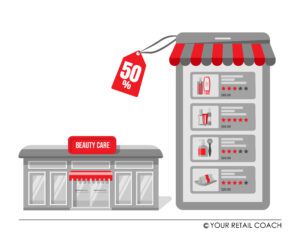
Competition from online businesses in the product category
The rise of eCommerce was a boon for customers and omnichannel retailers. But it made things hard for the traditional, offline retailers. And now competing with omnichannel players has become a normal affair for offline businesses in this sector. A big disruption for traditional retailers is the online marketplace platforms. Running on inventory-light models provides an edge to online retailers. On the contrary, brick and mortar businesses have to bear the brunt of investing in real estate. While online players get access to a wider geographical market, offline retailers remain confined to their local limits. Online retailers also have the opportunity to tweak their pricing strategies with volume sales. But with limited sales, traditional players have little scope to engage in price wars. Even expert salon & spa industry consultants could hardly refute it.
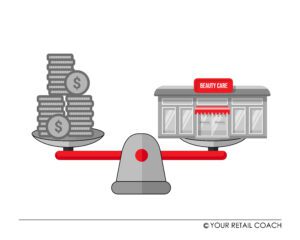
Margin pressure
A common restricting element for both offline and online product retailers is margin pressure. The product market of the beauty and personal care sector is dominated by a few big brands. There is nothing many businesses could do about it. The main reason for this is customer preference. Customers always prefer to go for only the known brands for their beauty and personal care requirements. Thus, product retailers in this sector emphasize the physical environment and services provided to customers as a distinguishing strategy. But there is another area where businesses can work is private-label brands. While margins can be better but quality control is of paramount importance with private-label brands.
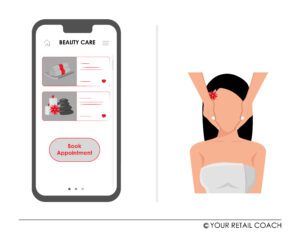
Hegemony of offline businesses in the service category
Services in beauty care include salon, spa, massage, therapeutic parlours, etc. The physical element is inherent in the case of beauty care services. Hence, the service providers have hegemony. These businesses can adopt digital channels in ways relevant to their business. These can include online booking, managing schedules, making payments, etc. But the competition is also there between these service providers. Here, the focus remains on providing a superior customer experience.
Going beyond products and services
In the beauty industry consulting, we have been observing that now customers around the world are becoming sensitive to many issues related to the beauty industry. These concerns are related to the environment, working conditions, animal rights, geopolitics, advertising campaigns, etc. Retailers do not have much to do about these issues. But they must keep a tab on important international news and events. This will help them keep a tab on changing customer tastes and preferences pertaining to products and services.

Lacking digital marketing
We have entered an era where digital experience has become an important component of marketing and customer experience. ECommerce is miles ahead of offline retailing in this matter. Sometimes it appears as if a majority of offline retailers have almost given up. Living in a denial mode is not helping them. It is time to go omnichannel strategically. Appearances in search engine results pages are critical to enhancing branding and brand visibility. They must reach out to their digital audiences and target customers beyond the boundaries of their localities.

Need to adopt a more professional approach
There are no formulas for running and managing a business. But there are principles, practices, and tools for management that must be in tune with the contemporary industry standards. That is the essence of adopting a professional approach in business. From planning to operations, it helps keep a business organized, competitive, and growth-oriented, with a higher degree of certainty. Businesses follow established principles and standards for preparing books of accounts and balance sheets. Then why not adopt the same approach while doing market research or developing business models? The crux of the matter is to manage business professionally. The beauty and personal care business also has its niceties and detailing. It affects the conceptualization and implementation of the business. The size of the business is immaterial here. Even a small retailer or service provider can avail professional help from any competent beauty salon consultant offering salon and spa business consulting services. An experienced and competent beauty salon consultant can provide relevant insights and bring new perspectives.
Poorly defined Operations
Small and medium businesses often ignore the relevance of operational planning. With a limited number of team members and limited operations, business remains mostly manageable. But they also know very well what happens during the rush hours or the festive seasons. Orders get delayed or even have to be cancelled. Customers have to wait longer in queues. Employees are overburdened. Routine internal activities have to be kept on hold. Customer experience goes for a toss. But with some one-time effort, all these situations could be avoided. It does not matter whether it is a small or medium business or a large-scale enterprise. Whether it is situated in a gigantic mall or it is a stand-alone shop. An essential requirement for managing it properly is to have operations manuals. And this does not need vouching from any cosmetics industry consultant, personal care industry consultant or beauty salon consultant.
Difficulties in establishing loyalty and impact of pandemic
Building a loyal customer base is one of the toughest marketing challenges for MSMEs in the beauty and personal care sector. We are not talking about the big product brands here but regular salons and beauty parlours, spa parlours, therapeutic parlours, cosmetic stores, etc. Customers are known to stick to their favourite retailers and service providers in their locality or city. It takes a strong reason to make a shift to another shop or service. This is especially true for services. The product-based retailers are already facing stiff competition from their online counterparts. The pandemic of 2020 made it difficult for the local, brick and mortar businesses to keep their operations running. Because of lockdown and curfew restrictions, many businesses had to keep their business shut for months. Employees had to take pay cuts, lose their jobs, or keep their jobs without pending pay. It is an extraordinarily difficult situation for offline businesses in the beauty and personal care sector. It is a crucial time for them to revisit their business models and bring improvisations for sustainability and growth.
How YRC can help
Established in 2012, we are a boutique retail and eCommerce business consulting firm. In the beauty and personal care industry, we help startups and existing enterprises establish robust and competitive businesses. We offer a wide range of beauty and personal care market consulting services. Sometimes these services are also referred to as salon and spa business consulting services. But the essence is the same. We keep into consideration the best industry practices and the unique challenges faced by businesses in this sector. We engage a team of professional and experienced beauty industry consultants.
In market research service, we help clients gain a comprehensive view of the target market. Our team of beauty industry consultants provide actionable insights for better business planning and strategy formulation.
As many businesses struggle to emerge from this pandemic, we are dedicated to helping our clients come up with the eCommerce and omnichannel strategy that is best suited for their business. Our CX experts for personal care and cosmetics market consulting provide assistance in mapping the customer experience journey covering the critical digital and physical touchpoints.
In business model development, we strive for formulating business models that can stand the test of time under given situations. We also define the strategic framework of the value chain and the internal capabilities required to deliver the intended value. Our business plan experts shall develop the necessary financial and commercial projections and assessments. In salon and spa business consulting services, our SOP consultants help clients identify and define their business processes and operations. The operational procedures shall be established. The expected standards of performance and output shall be mapped with every activity.
For more information on our beauty and personal care industry consulting services or if you have any specific queries, drop us a message and we shall get back to you.
Let’s Talk!
Related Blogs
Challenges for Luxury Retail Brands and Stores
The term ‘luxury’ could have different connotations from different perspectives. For some people, it is optional and they may not strongly feel the need to indulge. For some others, it could be a representation of status symbol, personal identity, and...
Starting an Online Luxury Retail Business: An Organized Approach by YRC
Luxury retail is an exclusive vertical. Premium customer support, impeccable product quality, robust distribution and delivery, and an irrefutable brand positioning leave no room for ordinary ways of doing business in luxury retail. From planning to operations,...
How to start an Online Jewellery Business?
Online Niches, Stats, & Steps every entrepreneur must know !!! Wearing jewellery is no longer restricted to women alone, times have changed and there is increasing demand amongst men to buy jewellery both online and offline. Currently, jewellery and accessories...


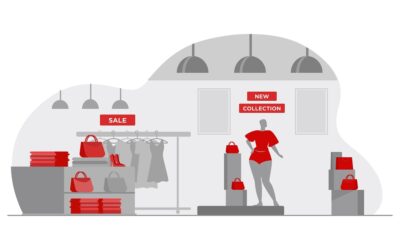
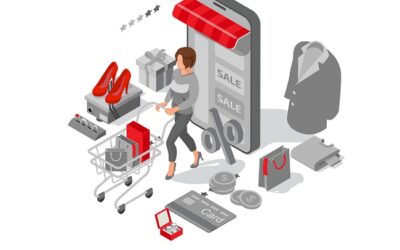
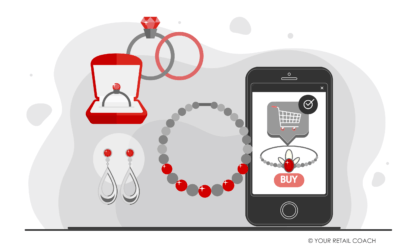
We work only for Visionaries.